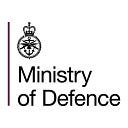Apache pilot: what’s in my kit?
Ever wonder what an Apache helicopter pilot takes along during a mission? Here’s a tour of one pilot’s kit 👇
My name is Jonny. I’m a Warrant Officer 2. I’m a British Army Apache pilot on Operations CABRIT in Estonia. The Apache’s speed, mobility and weight make it invaluable to ground operations all over the world.
The Apache attack helicopter can operate in all weathers, day or night and detect, classify and prioritise up to 256 potential targets in a matter of seconds. It carries a mix of weapons including rockets, Hellfire missiles and a 30mm chain gun.
Here is the kit that we carry inside the aircraft. 🚁👇
First I have my Apache helmet. It’s got a dark visor and a microphone that comes down to cover your mouth.
The helmet also holds the helmet-mounted display system that we have inside the Apache cockpit. The helmet is linked to the aircraft system on the Apache, meaning that the cameras and guns on the aircraft follow your head movement.
The helmet also has Helmet Mounted Display, which displays flight information such as height, speed and location.
Next, we’ve got our personal weapons system. In the army, we’re all soldiers first before we’re aircrew.
This is our SA80 carbine variant. It’s much shorter than a standard rifle and that’s purely so we can fit it inside the cockpit.
Soldiers, sailors and airmen and women all train to use the SA80 assault rifle in basic training, before moving onto specific trade training.
Next is the aircrew flying vest. It’s called BALCS, the Body Armour/Load Carriage System.
So firstly on the front, you can see we’ve got a secondary sidearm, the Glock 17.
The Glock 17 pistol is much lighter than its predecessor, the Browning pistol, and more accurate. It has an increased magazine capacity of 17 x 9mm rounds, compared to 13 rounds for the Browning.
This first pouch here, on the outside we’ve got what’s called an aircrew cutter. This is a device that allows us to cut-through a harness strap on the seat should we get trapped inside the seat itself.
Behind that on the actual pouch there is a location aids pouch. For the day, we’ve got orange smoke and for a night-time scenario, flip it around and we’ve got a night flare.
We also have a heliograph, which is a highly mirrored surface with a small sight glass in the middle of it. This signal can be seen from up to 40 miles away.
A heliograph is a signalling device that reflects sunlight to communicate over long distances.
I have a small bit of mine tape that we can use to create ground signs for aircraft looking for us above.
Mine tape is white tape that is carried by soldiers to indicate cleared mine areas but can be used for a variety of other things.
I also will carry a basic medical kit, inside here we have a couple of bandages, some antiseptic cream and another set of plasters.
I have my ground-to-air radio, it’s used to get in radio contact with other aircraft if I needed to be rescued. I also carry a spare battery for it, which is quite a large one.
In this pouch, there is a light-marker distress. This can be used to attract the attention discretely by a strobing bright white light or using an IR (infrared) filter covertly.
Then on the left-hand side of the jacket is a set of strops. This is used to attach a member of aircrew to the side of another aircraft if their own aircraft had gone down for any reason.
In the back of the jacket, we’ve got some emergency drinking water. Comes in sachets of 50 ml and it sits in a little pouch in the back of our vest.
Lastly here I’ve got my go-bag. This holds a lightweight sleeping bag and a thermal jacket.
Everyone packs their go-bag differently, but there is a few key things that one needs to have to allow you to survive out in the field.
Finally, I’ve got a floppy hat, a shemagh (scarf) and a spare thermal top, and I’ve always got a spare set of rations and a spare set of waterproofs with me as well.
The 24 hour ration pack is designed to be eaten hot or cold. Regardless of which, it’s nutritious content remains the same.
